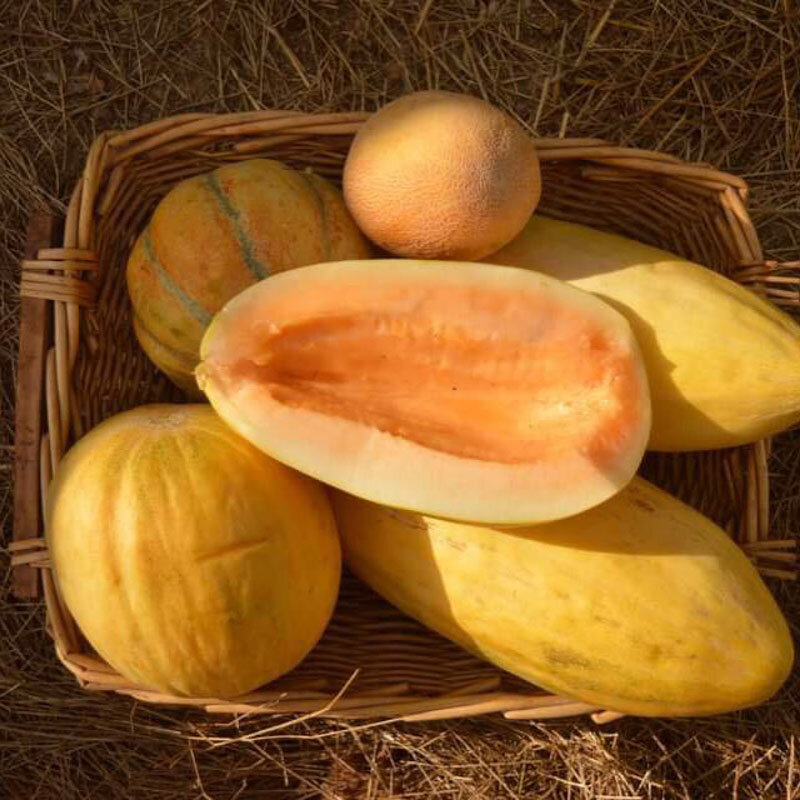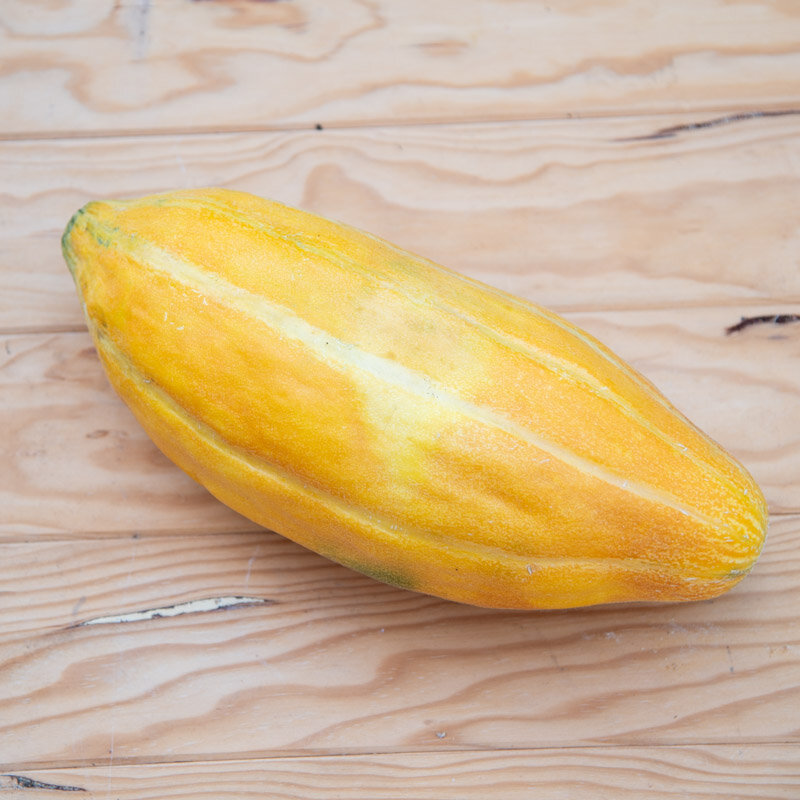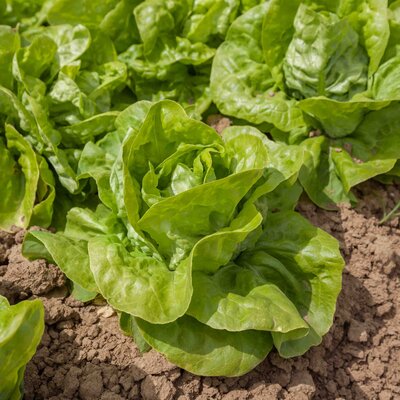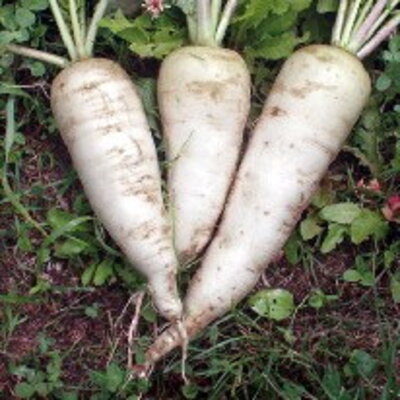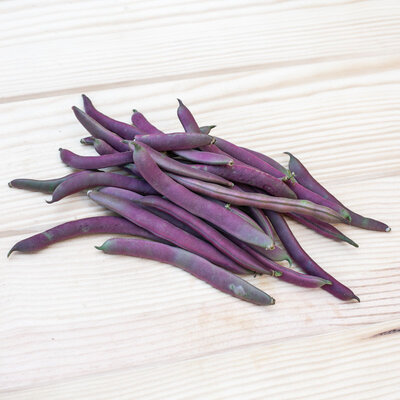Esperanza de Oro - Melon
The Esperanza de Oro Spanish melon is a variety with large, sometimes irregularly shaped fruits, most of which are elongated. The thin, yellow skin encloses green to salmon-colored flesh, which is highly fragrant and sweet.
Adapted to hot, dry conditions, this variety has been selected for the size and sweetness of its fruit.
Characteristics of the Esperanza de Oro Spanish melon
The Esperanza de Oro Spanish melon, Cucumis melo, originated in the United States. This mid-season variety was selected for the size and sweetness of its fruit by a farmer in Corrales, New Mexico, and named after the family business. Drought-resistant, this Spanish melon offers large, more or less oval, yellow-skinned fruits, 10 to 20 cm in diameter, weighing up to 4 kg. Their green to orange flesh is very sweet, ideal for eating fresh in slices or in jam recipes.
How to sow the Esperanza de Oro Spanish melon?
Green Spanish melons are sown in pots of 2 to 3 seeds, 6 to 8 weeks before transplanting, from March to April. Place seedlings under a bright, warm shelter, at a temperature of between 18 and 21°C. Keep substrate moist until seeds emerge. Transplant melon seedlings with the root ball in the vegetable garden, after the last frosts. From April to May, when outside temperatures no longer fall below 15°C, you can sow directly in the ground, in bunches of 2 to 3 seeds. Melons need plenty of light and warmth to reach maturity before the frosts.
Prepare holes filled with compost or organic matter 2 weeks in advance, spaced 1 m apart in all directions, to accommodate the melon plants or seeds. In cooler regions, it's advisable to warm up the soil with mulch before planting, and to leave only one to three fruits per plant to encourage the ripening process. To encourage height growth and free up space on the ground, install sturdy supports when transplanting the plants.
Water freshly transplanted seedlings regularly, avoiding wetting the foliage, then reduce watering as the fruit ripens to increase sugar content and concentrate flavours.
Mulch the soil to keep it cool and limit water evaporation. In the vegetable garden, the Spanish green melon enjoys the company of corn, radishes, beans and leeks. It's best to keep it away from other Cucurbitaceae (squash, cucumber, etc.) and potatoes.
How can I tell if a Spanish melon is ripe?
The Esperanza de Oro Spanish melon is harvested from July to October, when the fruit changes color and gives off its typical fragrance. In addition, the skin around the stalk begins to crack, while that on the opposite side becomes tender. Cut the fruit as close as possible to the stem, a few centimetres above the stalk. They will keep for several days in a cool, dark place. In the kitchen, the green Spanish melon can be eaten fresh, sliced, skewered or in salads. Combined with orange or lemon, it is also very popular in jams.
These products may also be of interest to you
in the ground, in bucket
Sow in pots at a temperature of between 20 and 25°C, 6 weeks before planting. Transplant with the root ball, after the last frosts, in planting holes enriched with compost, spaced 1 m apart in all directions. Sowing in the open ground under the same conditions is possible when the soil is well warmed and outside temperatures no longer fall below 15°C.
Melons need plenty of light and warmth to ripen before the frosts.
March, April, May
April, May
July, August, September, October
in the ground, in the greenhouse
sunny
fort
limestone, humus
reheated, rich, drained, light
Cucumis melo
mid-season
From 2000 to 4000 g
25 seeds
oval
juicy
Yellow, Green
From 15 to 20 cm
runner
United States
This variety was selected for the size and sweetness of its fruit by a farmer in Corrales, New Mexico (USA) and named after the family business. Selection for fruit shape is to be continued.




